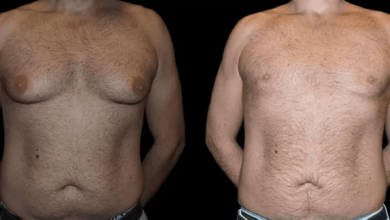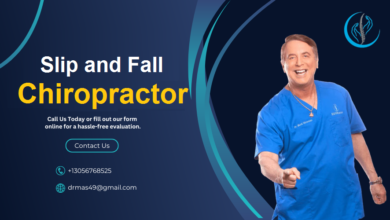The Hair Loss Wake-Up Call: Addressing Stage 1 Thinning with Medical and Natural Solutions
Hair loss is an issue that is a common concern and it affects millions of people worldwide. It can begin subtly, often starting with mild thinning or a receding hairline, referred to as Stage 1 hair loss. Early intervention during this stage is crucial for slowing down or even preventing further hair loss. This article explores stage 1 hair loss treatment, the causes, and best practices for managing it.
What is Stage 1 Hair Loss?
Stage 1 hair loss is characterized by minimal thinning of the hair or a slightly receding hairline, which is typically not noticeable to others but may become apparent to the person experiencing it. This stage is considered mild, and many individuals might not realize that they are in the early phases of hair loss.
It’s important to recognize Stage 1 hair loss as it presents the opportunity to intervene before the condition progresses. The earlier treatments are started, the better the chances of preserving existing hair and preventing more severe hair loss.
Causes of Stage 1 Hair Loss
Several factors can contribute to the onset of Stage 1 hair loss, and understanding these factors is key to choosing the right treatment.
- Genetics (Androgenetic Alopecia): The most common cause of hair loss is genetic predisposition, also known as androgenetic alopecia or male and female pattern baldness. This condition typically begins with a receding hairline or thinning crown in men and general thinning in women.
- Hormonal Changes: Hormonal imbalances, such as those caused by pregnancy, menopause, or thyroid problems, can lead to hair loss in both men and women.
- Stress and Lifestyle Factors: Stress, poor diet, and a sedentary lifestyle can also trigger hair loss. Stress, in particular, can cause a type of temporary hair loss called telogen effluvium, where hair enters the shedding phase prematurely.
- Medications and Health Conditions: Certain medications, including chemotherapy drugs, antidepressants, and blood pressure medications, can cause hair loss. Additionally, conditions such as autoimmune diseases or nutritional deficiencies can contribute to hair thinning.
Early Diagnosis of Hair Loss
Detecting hair loss at Stage 1 can be tricky because the changes are often subtle. However, a few signs may indicate the onset of hair thinning:
- A noticeable increase in hair shedding during brushing or showering.
- A slightly wider part in the hair.
- A gradual receding hairline, particularly near the temples.
A consultation with a dermatologist or a hair specialist can help in diagnosing the stage of hair loss. They may use tools like a dermatoscope to examine the scalp closely or conduct a hair pull test to assess the extent of shedding.
Stage 1 Hair Loss Treatment Options
Several treatment options are available for Stage 1 hair loss, ranging from topical treatments to lifestyle changes and more advanced medical interventions.
1. Topical Treatments
Minoxidil: Minoxidil, sold under brand names like Rogaine, is an over-the-counter treatment that is FDA-approved for both men and women. It works by stimulating hair follicles, increasing the hair’s growth phase, and slowing down the shedding phase. Minoxidil is applied directly to the scalp and is most effective when used consistently over time.
2. Prescription Medications
Finasteride: Finasteride, marketed as Propecia, is an oral medication approved for male pattern baldness. It works by blocking the hormone dihydrotestosterone (DHT), which is responsible for shrinking hair follicles in people with androgenetic alopecia. Finasteride is available only by prescription and is not suitable for women.
Spironolactone: For women, spironolactone is sometimes prescribed to address hormone-related hair loss. This oral medication is typically used to treat acne or fluid retention but can block the effects of androgens, which contribute to hair thinning in women.
3. Low-Level Laser Therapy (LLLT)
Low-level laser therapy is an emerging treatment that uses red light to stimulate hair growth. The lasers are thought to increase blood circulation to the scalp, thereby promoting follicle health and hair growth. Individuals can now utilize innovative, laser-based hair growth devices – such as combs and helmets – in the comfort of their own homes. While research is still ongoing, early studies suggest that LLLT may be effective in treating early-stage hair loss.
4. Lifestyle Modifications
Diet and Nutrition: A balanced and healthy diet which is rich in essential vitamins and minerals is fundamental for healthy hair growth. Nutrients such as biotin, zinc, and vitamins A, C, and E play a critical role in maintaining the health of hair follicles. A deficiency in these above nutrients can play a huge role in hair thinning.
Stress Management: Chronic stress can trigger hair loss, so it is important to adopt stress-reduction techniques like meditation, yoga, or regular exercise. These methods can help maintain hormonal balance and reduce the risk of hair shedding caused by stress.
5. Scalp Care and Maintenance
To encourage hair growth and prevent further shedding, it’s essential to prioritize scalp care and maintain its optimal health. Use gentle shampoos that do not strip the scalp of its natural oils, and avoid excessive use of heat-styling tools or chemical treatments that can damage hair. Scalp massages daily can also stimulate blood flow, which encourages healthier hair growth.
Conclusion
Stage 1 hair loss presents a critical window for intervention. With the right combination of hair loss treatment in Delhi—topical solutions like minoxidil, prescription medications like finasteride, or lifestyle adjustments—you can potentially slow or even stop further hair loss. Early treatment, along with a focus on scalp health and proper nutrition, can improve the chances of retaining hair and maintaining overall hair health. Consult a healthcare provider to determine the best course of action tailored to your condition.



